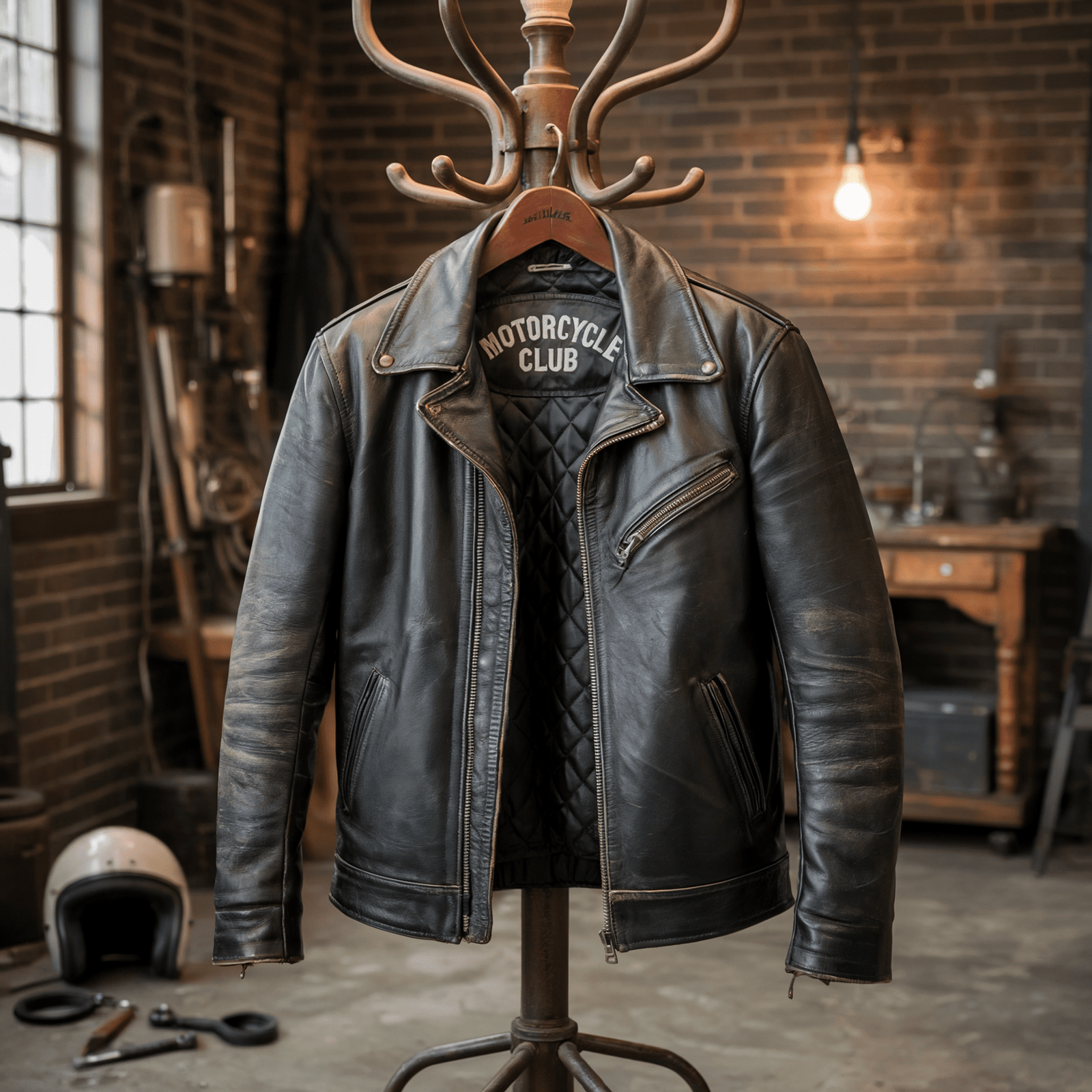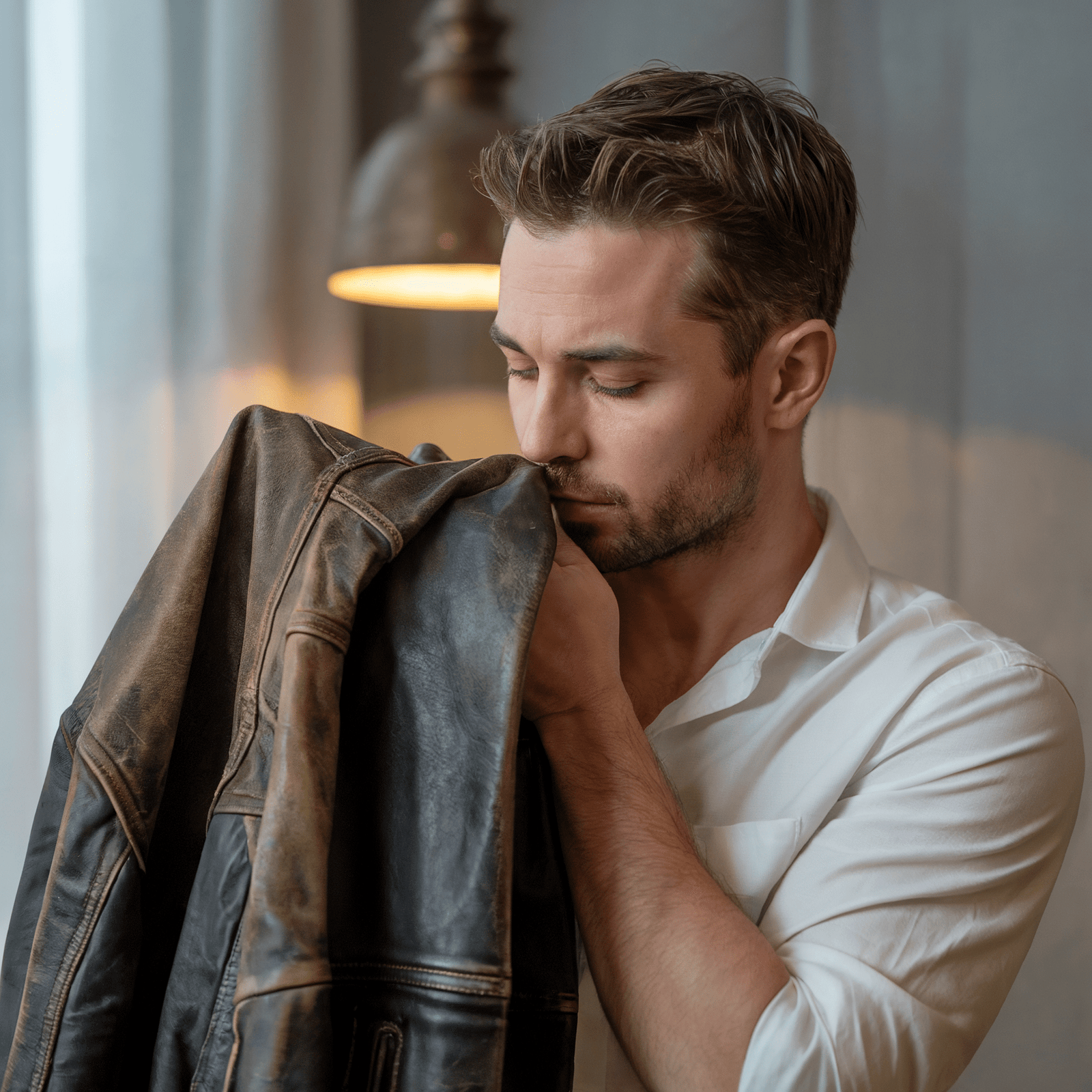Your Cart is Empty
BLACK FRIDAY SALE $25 OFF - USE COUPON BFRIDAY25 AT CHECKOUT NOW!
Menu

BLACK FRIDAY SALE $25 OFF - USE COUPON BFRIDAY25 AT CHECKOUT NOW!

Leather Embroidery Basics to Beautify Your Leather Products
by Jennifer Smith November 19, 2023 8 min read
Key Takeaways
- Leather embroidery is a great way to personalize your leather goods as it gives a unique flair to them.
- Hand embroidery on leather can be physically demanding but well worth the effort. Machine embroidery is faster and less tiring, but there is less room for fixing any errors.
- With the right tools and techniques, you can ensure a neat and precise final design on the leather.
The practice of embroidery can be traced back to as early as the 3rd century BC, yet it remains one of the most popular ways to decorate fabrics even in contemporary times. Leather has been decorated with hand or machine embroidery for ages, and embroidered leather products look aesthetically pleasing. From the techniques and tools used to the types of embroidered products, you will learn the basics of leather embroidery in this blog.
Defining Leather Embroidery
Leather embroidery is the art of embellishing leather with patterns, text, logos, or any other design with the help of threadwork. Beautifully decorated leather products are loved by the masses, as they make a strong statement. While you can buy embroidered leather products or get them customized, you can learn how to do some hand embroidery on leather yourself.
Leather is very different from any other type of fabric. It is thicker, and you cannot refill any hole made in it, so embroidering it requires a different approach. Many factors must be considered before embroidering on leather, including the type of material, needle, thread, or design.
How to Embroider Leather?
Depending on the nature of the project, you can do embroidery on leather by hand or with the help of an embroidery machine for leather.
Hand Embroidery on Leather
Considering the thickness and strength of leather, you might think it's hard to embroider it by hand. However, all you need to learn is to choose the right tools, stitching for embroidery, and the correct method to imbue a design, and you can quickly get the hang of hand embroidery on leather. The result is definitely worth the effort. For hand embroidery, you are supposed to poke holes before embroidery to mark the stitch line of the design.
Machine Embroidery on Leather
An embroidery machine for leather makes your work much faster and easier, reducing the strain on your hands. A leather embroidery machine is built to embroider stiff and thick leathers effectively and allows you to make intricate designs. It is recommended to use tracing paper to trace the design onto leather with embroidery effectively.
Embroidery Machine types and Design Software
While single-needle and multi-needle embroidery machines are suitable for small to large designs, computerized embroidery machines offer incredible ease and efficiency. These computerized machines use design software to make and edit different digital patterns and let you choose the thread color and design placement. Computerized machines embellish the leather with all sorts of designs with great precision, also allowing you to control the design density according to the type of leather.
There are several different design software for machine embroidery that have simple or advanced features. Some may help you create a simple pre-designed pattern on leather, while others allow you to customize a design.
Comparison Between Machine and Hand Embroidery
Primarily, you will choose to embroider leather by hand or by machine, depending on the type of your project. Smaller patterns on single products are best done manually, such as embroidering your name, logo, or an intricate pattern. Hand embroidery is unique and can be done on several types of leather textures. Making complex designs with hands is also possible, but it is physically demanding and time-consuming. Moreover, you need to have some level of skill to ensure a neat result.
On the other hand, machine embroidery is way faster and more efficient than hand embroidery. The technical assistance of the machine gives a precise and consistent result, even with highly complex designs. You can embroider thick and tough types of leather with the help of machines. Some cons of machine embroidery on leather are the requirement for expensive equipment and the difficulty of fixing mistakes.
Tools and Materials Needed for Embroidery on Leather
The right set of tools and skills can help you create a splendid embroidered design on the leather. Here are some of the leather embroidery essentials:
Leather Material
Beginning with the material, you need to make sure you pick suitable leather for embroidery. It is easy to create all sorts of designs and patterns on soft and smooth leathers. With thick and rough textured leather, the embroidery needle might break or bend repeatedly, hindering a neat finished design. If you are using a machine, it can embroider leather with a thickness of up to 6 oz.
For leather embroidery, you can choose durable leather with adequate softness and flexibility, such as cowhide, sheepskin, or lambskin. Chrome tanned leather is softer and more suitable for embroidery.
Needles
There are many different types of needles available for leather embroidery. The different sizes and shapes of needles allow us to work on different materials. The choice of the needle depends upon the leather thickness. If the leather is thin, it can be embroidered with an 11/75 needle. The size of the needle needs to be increased as the thickness increases.
Try working with a smaller needle on a scrap piece. If you face difficulty, try with a needle that is a tiny bit wider than the previous one. Keep trying until you get the suitable size of needle for your work.
Thread
The choice of thread for embroidering leather is very important. Depending on the design, intricacy, and product type, you can go for nylon, polyester, wool, or silk threads. The thickness and tensility of the thread are also important to ensure the desired result. Avoid using cotton thread as it deteriorates over time due to the presence of tannins in leather.
Stabilizer
Another essential part of leather embroidery is using a stabilizer as a backing for leather. Using a stabilizer prevents stretching leather and stitches to cut away leather completely. There is a visible difference between leather embroidered with or without a stabilizer, as using a stabilizer makes the design more attractive. Stick-on, cut-away, or tear-away stabilizers are typically used for leather embroidering. It is attached to the backside with the help of a temporary spray adhesive.
Hoops
Hooping is one of the basic techniques used for leather embroidery. The hoops are rings made of plastic or wood that fit into each other to hold the leather section in place. With hooping leather, there is always a risk of scuff marks, for which a felt barrier can be used. Removing the hoops as soon as the embroidery is done is a way to prevent permanent imprints on leather.
You can also go for magnetic hoops, which are much easier to use. Magnetic hoops are an excellent way to avoid scuffing and imprinting marks completely. A magnetic hoop forms a bond with the other hoop without putting any pressure on the leather.
Leather Embroidering Steps
After learning the basic tools and ways to embroider leather, it's time to understand the standard procedure of beautifying leather goods with the art of embroidery.
Preparing Material
Preparing leather for embroidery involves two steps. The first is to clean the surface with a leather cleaner to remove dirt and excess oil. After that, punch holes in the surface for design formation. As the needle work will form permanent holes in leather, poking holes before embroidering will give you a clearer idea of where the stitches should go.
Choosing Needle, Thread and Stabilizer
Choose an appropriate sized needle, strong enough to do the work without breaking easily. The same goes for the thread, as it needs to be sturdy enough. Choose a color that doesn't camouflage with the leather and makes your embroidery clear and visible.
Apply a spray adhesive to the back of the leather and use a medium weight cut away stabilizer to ensure adequate support to the material while it is embroidered.
Design Placement
Deciding where the embroidery design goes is vital, as the wrong placement would make all the effort go in vain. If you are embroidering a logo on leather, it must be centered to be highlighted. The size of the logo should neither be too big nor too small. If you are embroidering a larger surface area, plan the design placement wisely to execute it correctly.
Types of Embroidery Designs
The types of designs that you can embroider on leather are unlimited. From small florets, sheer designs to highly intricate kaleidoscopic patterns, you have many options. You can also create beautiful decals with satin stitch columns for a gleaming design. Or, you can embroider logos, and symbols to personalize a product. Engraving text via threadwork is a popular way to adorn leather jackets, hats, bags, and boots. The crux of an embroidered design is that it is portrayed appealingly and doesn’t look gaudy.
Hooping Leather
After deciding on the design and its location, you can now hoop the section to begin working. As leather is an unforgiving material for imprints, a magnetic hoop is the best choice to avoid marks that usually appear with plastic and wooden hoops. Make sure the size of magnetic hoops is bigger than your design pattern to ensure ease of working and a neat result.
Begin Embroidering
Up until now, all the prep work you have done safeguards an efficient embroidery process. Using the pre-poked holes as a guide, you can begin embroidering using an appropriate stitch type. We recommend running stitches for a good quality design. As running stitches run parallel without
When you are embroidering leather, avoid pulling the stitches tight, as that will result in puckering.
Remove the hoops as soon as you finish the design to prevent any hoop marks. If there is any excess thread left, trim it. Remove the stabilizer, and you are done with your splendidly adorned piece.
Custom Embroidery on Leather
You can get custom embroidery done on a leather jacket from Leather Skin Shop. Be it an intricate pattern on the back of the jacket or just your initial for the letterman jacket, custom embroidered leather jackets are worth having for a personalized style.
Embroidered Leather Uses
With the help of beautiful embroidery, leather products can look a lot more appealing. Embroidery can be done on all sorts of products, including sheaths, saddles, belts, and even keychains. Here are some of the most popular leather products that are usually embroidered.
Embroidered Leather Jackets
There are times when you want your leather jacket to make a strong statement, and there is no better way to get it embroidered with an attractive design. Unique leather jackets with magnificent threadwork currently dominate men’s and women’s fashion, establishing the winning sartorial sense of the wearer.
Embroidered Bags
A leather bag with eye pleasing embroidery shows your unique style sense and creativity. Embroidered leather handbags, purses, and clutches are considered a luxury style statement.
Hats
What’s better than letting your hat be the hero piece of your whole look? An embroidered leather hat takes up even the simplest of outfits up a notch.
Gloves
You can get your name or logo embroidered on gloves to personalize them. It is a common practice for athletes to wear leather gloves with the name or logo of the team.
FAQs
Can leather be embroidered?
It is possible to embroider leather as long as you follow the right techniques and choose the correct needle and thread. You need to pick the right type of leather suitable for embroidery, choose a lighter density for the embroidery, and use a stabilizer to provide support to leather while embroidering.
Is it possible to embroider leather by hand, without a machine?
Yes, you can embroider leather by hand. Before doing hand embroidery, you need to consider a few things, such as the suitability of the material for embroidery, an appropriate choice of thread that won’t wear away easily, and a suitable needle size that doesn’t break while working.
What type of needle is suitable for embroidery on leather?
Threadwork on leather must be done with a needle specifically designed for leatherwork. You can choose a wedge-pointed needle to make narrow needle perforations.
How do you embroider on faux leather?
You can do embroidery on faux leather, but make sure it is of good quality. As it is made from synthetic materials, faux leather is more prone to damage. Cheap faux leather is thin and can get sagged or even tear with intricate needlework.
Final Word
Embroidering on leather is definitely a lot of fun. The effort you put into making exquisite designs is worth it, as you get a splendid leather product. Besides considering the above-mentioned tips for leather embroidery, be patient and vigilant while getting the embroidery done to achieve the desired results.
Leave a comment
Comments will be approved before showing up.
Also in Blog | Leather Skin Shop

Types of Sleeves in a Leather Jacket
by Jennifer Smith August 24, 2025 6 min read
The different types of sleeves shape the shoulder, control the movement, and change how the leather jacket looks in motion. There are various types of sleeves, such as cap sleeves, bell sleeves, raglan sleeves, and more.

How to Get Smell Out of Leather Jacket?
by Jennifer Smith August 08, 2025 4 min read
Over time, a leather jacket can smell like sweat, mildew, or smoke. But do not worry, there are safe, proven ways to get rid of those unpleasant smells at home.

What Is A Trench Coat
by Jennifer Smith August 02, 2025 6 min read
A trench coat is a long, lightweight outerwear piece designed to protect against wind and rain. Its defining features include a double-breasted front, a belted waist, wide lapels, and often epaulets and a storm flap.
Leather Jackets for Men
Leather Jackets for Women
Accessories for Men & Women
Recent Articles
- Types of Sleeves in a Leather Jacket
- How to Get Smell Out of Leather Jacket?
- What Is A Trench Coat
- What Is A Peacoat Jacket?
- What is Polyester Fabric?
- What is Satin Fabric?
- What is Shearling Leather?
- Varsity Jacket Or Letterman Jacket? Everything You Need To Know Before Buying
- What is Semi Aniline Leather?
- What Is Cotton Fabric?
Size Chart